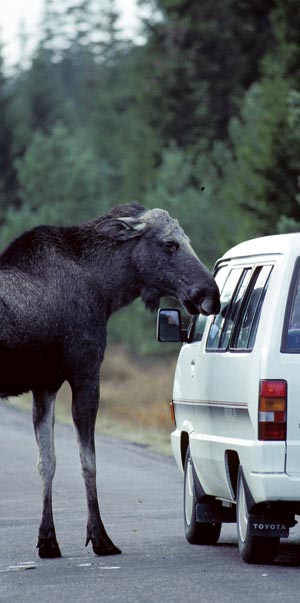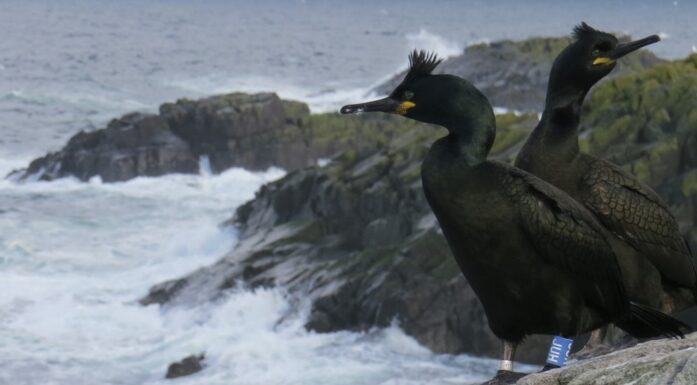Watch out – moose!
An vehicle-based computer alert system that warns of moose on the road causes motorists to react quickly. Roadside warning signs just don’t have the same effect.
Every day, roughly 18 deer are hit by either vehicles or trains, and each collision costs Norwegian taxpayers around NOK 200 000. Experience over several years shows that motorists turn a blind eye to road signs that warn of the danger of moose.
Simulated moose
As a part of the user-driven research project called WiseCar, SINTEF has created a prototype of a system that can warn of moose and traffic jams in the roadway ahead. Forty-nine subjects were invited to “drive” a stretch of road that took half-an-hour in a car simulator. Researchers had pre-positioned moose and traffic jams at various places in the stretch.
“The drivers were only told that they would drive a real stretch of road. In addition, we put a little pressure on them by offering them a reward if they managed to drive the stretch in a given time,” says Lone-Eirin Lervåg at SINTEF.
All subjects drove past the usual warning signs of moose in the road, without any of the drivers responding. But during the trip, half the participants were warned of moose or traffic jams via a small computer in the car. The other half received no warning.
Lower speed, increased attention
The group of drivers that was given a warning in the car immediately slowed down by 10 km/h and maintained a steadily lower speed with increased awareness right up until they encountered the moose or the traffic jam, where they decelerated in a controlled way. The control group, on the other hand, maintained the same speed the whole time, was considerably more surprised when they discovered a moose in the middle of the road, and had to brake suddenly.
The researchers also tested whether the car-based warning system was distracting, so that the driver shifted his or her focus from safe driving to keeping an eye on the display. The researchers did not find any evidence that this had happened.
Future Systems
Driver-support systems are now included as an option in new cars and can be retrofitted in old, and SINTEF researcher Lervåg has no doubt that warning systems that alert drivers to conditions in the road ahead will come to market soon.
“The prototype we created is based on wireless communication and an information platform for traffic (TRIP) developed by one of the partner companies, Triona. When an obstacle in the road such as a moose or a traffic jam is detected, a warning is sent to motorists via the platform. The display on the dashboard shows the driver a familiar road sign warning of a moose or a traffic jam, in addition to an arrow that shows how many metres it is to whatever is blocking the road.”
The warning system is a part of the WiseCar project, which is working to create and evaluate support systems for use in cars. Q-Free, SINTEF, the Norwegian Public Roads Administration, Triona, Norsk Navigasjon, P4, MapSolutions and Skandinavisk Teknologiutvikling are partners in the project.
Åse Dragland





